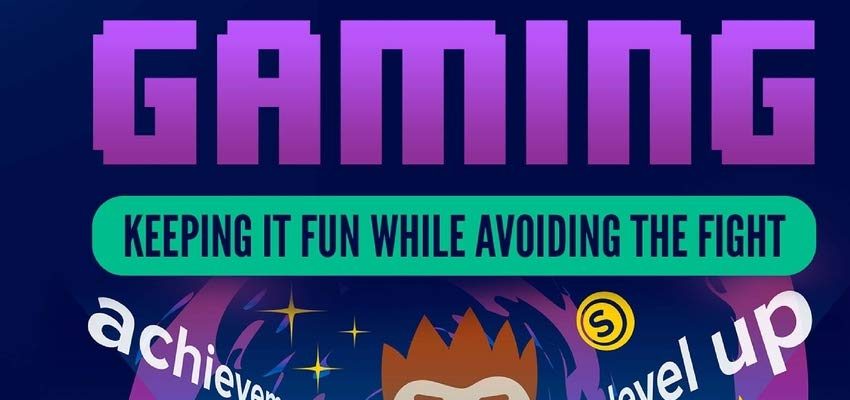Content Table:
Parent’s Guide to Online Gaming, Part 1
The internet touches every aspect of your children’s lives. Where you might look up an unknown word in a dictionary, your kids are more likely to use dictionary.com. Where you use the telephone, they use instant messenger. An even greater difference can be found in how they play games. Where the games of their parent’s generation may have involved a board, cards, or at their most sophisticated a console system, the games your children play on the net can be far more complex. They mine gold, spread empires, fight dragons and aliens alone or with tens, hundreds, even thousands of their fellow gamers. All of this makes for a confusing mishmash of names, places, jargon, and lingo that can leave you with no idea what your kids are actually doing and a vague feeling of uneasiness that some part of it might not be good for them.
Understanding Your Child’s Gaming
What’s appropriate for your kids is a decision only you can make. How much violence they are exposed to, how much time they spend in front of a screen, and how much contact they have with the faceless strangers so common to the net are all questions you must grapple with and, in the end, decide for your family. While we can’t help you make these rough decisions, we can certainly help you get the information you need to understand your children’s hobbies better, both to make informed judgments about what they should and should not be doing, and to help you reach into another part of their lives that may have previously seemed like something of a puzzle box.
The Easy Stuff
The simplest type of online game is the sort of Flash or Java driven game that you generally see running inside your web browser. This type of game tends to be relatively simple compared to the standalone games discussed later. Common examples include Bejeweled, Zuma, and Diner Dash. These games are almost universally single-player and have none of the sort of violent or mature content that keeps parents up at night. Were they movies, they would be G Rated, with perhaps the occasional game stretching to PG. If this is the type of game your kids are into, then first, be relieved. Then, try the game out. Many of these games can be very enjoyable for even the most casual of players. Some, such as Bookworm, even have genuine educational content. These games can be as much an opportunity for bonding and learning as throwing around a baseball in the backyard, and have the added bonus of being much easier to get your kids to sit down with you and play.
FPSs: Finding Something to Shoot
FPS stands for First Person Shooter. They are first-person in the same sense that a story might be. That is, the player sees the world through the eyes of a single character and interacts with the game environment as though he were that character. Shooter comes from the primary goal of most such games, which is the shooting of whatever happens to be the bad guy. FPS games are among the most popular online. Common examples include Doom, Battlefield: 1942, and the X-Box game Halo. From a parental perspective, these games can be cause for concern. They vary widely in the amount of realism, degree of violence, language, and general attitude. The only way to get a good idea of the content issues is to watch the particular game. If your kids don’t want you watching while they play, then fire up the game yourself sometime when they aren’t around. There is a sizable variation in how violent and how personal FPS content can be from game to game. The single-player portion of Halo, for example, has players fighting against alien invaders with largely energy weapons and a minimum of realistic human suffering. In contrast, WWII themed games tend to go out of their way to show realistic violence. Given the subject matter, this is appropriate for the game, but may not be for your kids.
Understanding Violence in Gaming
Online play presents a potentially greater concern. The goal of online FPS games is almost always killing other players. While some games do have various modes where this is a secondary goal, all of them give the player a gun and encourage him to use it on characters representing other people. Simulated gore and the use of violence against others to achieve goals may be things you don’t want your kids exposed to. Again, these are your decisions to make, but we encourage you to make them with as much information as possible. Talk to your kids. Find out what they think, in their words, is going on in the game. Make sure they see the line between what happens in the game and what happens in the real world, between what it’s okay to simulate and what it’s okay to do. The answers may surprise you. If your children understand the differences, see real violence as deplorable and simulated violence as part of the game, then FPS games, even online ones, can be a perfectly healthy way to have fun and let off steam. In the end, it falls on you to make sure that what your child gets out of the game is good for him or her.
Next time, we’ll talk about RTS and MMORPG, the two other common types of commercial online games and touch on the twin demons of addiction and predation.



